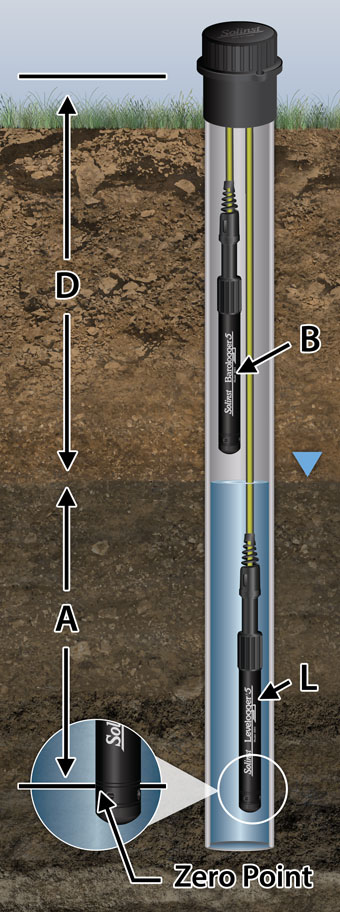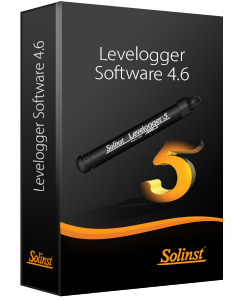
Figure 1-1 Levelogger
Measurement Fundamentals
1.2.1 Level
All Leveloggers measure total (absolute) pressure. When submerged, the Levelogger is recording the combination of barometric pressure and water pressure. The actual pressure of just water (A) above the sensor is obtained by subtracting barometric pressure (B) from the total pressure (L) (see Figure 1-1).
The best method to compensate for barometric pressure is to employ a Barologger above the water level, to obtain records of barometric pressure. The Levelogger Software includes a Data Wizard, which guides you through the automated process of barometric compensation. Manual methods can be employed to determine the absolute water level using barometric records collected on-site or available from a local weather station (i.e. airport). Water level readings from Leveloggers are automatically temperature-compensated.
A = Actual water column height
B = Barometric pressure
L = Levelogger total pressure readings
D = Depth to water level, below reference datum
Leveloggers measure the pressure of air plus water column above their sensor (zero point). To adjust the level readings after data collection, for example to water level depths below top of casing (D), refer to the Advanced options within the software Data Wizard.
Note: The Levelogger Gold series convert pressure readings to the water level equivalent above the datalogger's pressure zero point of 950 cm (31.17 ft). The Levelogger 5 and Edge Series have no zero point offset. As such, water level data will appear different, although measuring the same amount of pressure (i.e. Levelogger 5 data will appear to be reading 950 cm (31.17 ft) higher than a Levelogger Gold). Barometric Compensation using the Data Wizard in Levelogger Software Version 4.4.0, automatically considers this zero point offset difference when compensating a mix of models.




